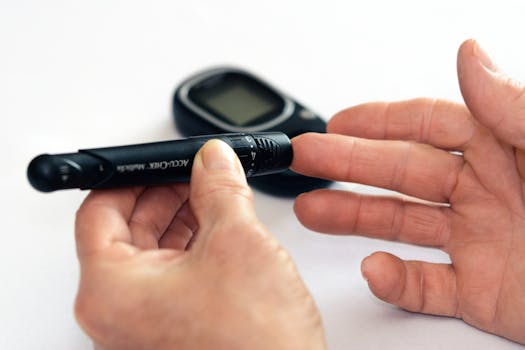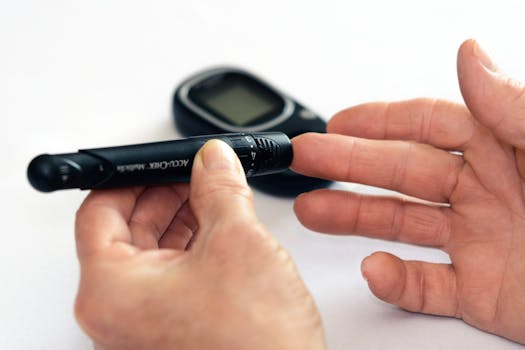Low-Carb Diabetic Diet — A Complete Guide for Everyday Living
Managing blood sugar while still enjoying satisfying meals is possible. The phrase Low Carb Diabetic Diet: Complete Guide captures the focus of this article — practical, evidence-informed steps for people with diabetes or those aiming to prevent it. Within the first paragraphs you’ll find clear strategies, meal ideas, and safety notes to help you adopt a lower-carbohydrate approach without undue risk.
Why a Low-Carb Approach Can Help
Lowering carbohydrate intake reduces the size of post-meal blood glucose spikes and can improve long-term glycemic control for many people. A low carbohydrate diet often leads to reduced reliance on medications, improved weight management, and fewer glucose swings. It’s particularly helpful for people with type 2 diabetes and those with prediabetes who want to slow or reverse progression.
What “Low Carb” Means in Practice
There’s no single definition, but common categories include moderate low-carb (100–130 g carbs/day), low-carb (50–100 g/day), and very low-carb or ketogenic (under 50 g/day). Choose a target based on goals, medication use, and personal tolerance. If you’re on insulin or sulfonylureas, work with your clinician to prevent hypoglycemia when lowering carbohydrate intake.
Building Balanced Low-Carb Meals
A sustainable low-carb diabetic meal plan emphasizes nutrient density rather than simply cutting carbs. Focus on:
- Non-starchy vegetables (leafy greens, broccoli, peppers) for fiber and micronutrients.
- Quality proteins (fish, poultry, lean meats, legumes when tolerated) to support satiety and muscle mass.
- Healthy fats (olive oil, avocados, nuts, seeds) to provide energy and improve meal satisfaction.
- Limited whole grains and starchy sides, unless you’re following a moderate low-carb plan.
Special Considerations: Prediabetes and Medication
If you have prediabetes low carbohydrate diet strategies can be particularly effective at improving insulin sensitivity and reducing fasting glucose. Lifestyle change is central in prediabetes management. However, if you’re taking glucose-lowering medication, coordinate any major dietary shift with your provider to adjust doses and avoid low blood sugar events.
Monitoring and Adjusting
Frequent self-monitoring of blood glucose (SMBG) or continuous glucose monitoring (CGM) helps you learn how different foods affect your levels. Track patterns rather than single numbers: observe how breakfasts, activity, and portion sizes alter glucose. Make gradual adjustments and prioritize consistency to avoid dramatic fluctuations.
Practical Meal and Snack Ideas
Examples that fit many low-carb diabetic plans:
- Breakfast: Omelet with spinach, mushrooms, and a side of sliced tomato.
- Lunch: Grilled salmon salad with mixed greens, avocado, and olive oil dressing.
- Dinner: Stir-fry with chicken, broccoli, bell peppers, and a small portion of cauliflower rice.
- Snack: Greek yogurt (unsweetened) with a few almonds or cucumber slices with hummus.
Evidence and Credible Guidance
Research supports carbohydrate reduction as an effective strategy for lowering HbA1c and facilitating weight loss in many people with type 2 diabetes. For practical public-health guidance and evidence summaries on healthy eating for diabetes prevention and management, see authoritative resources such as the CDC’s guidance: CDC guidance on healthy eating.
For a broader read on diabetes types, care approaches, and long-term management, you may also find additional context in this related article: descriptive anchor text.
Common Pitfalls and How to Avoid Them
Watch out for these issues when starting a low-carb diabetic plan:
- Over-restricting and becoming unsustainably hungry — prioritize protein and healthy fats to stay satisfied.
- Not adjusting medications — this can cause hypoglycemia if insulin or certain oral agents aren’t reduced appropriately.
- Ignoring fiber and micronutrients — include non-starchy vegetables and nuts to support gut health and vitamins.
Long-Term Success Tips
Make changes gradually, measure progress with both glucose metrics and how you feel, and aim for a flexible approach rather than perfection. Social support, meal planning, and preparing low-carb swaps for favorite dishes help maintain adherence. If weight loss is a goal, combine reduced carbohydrates with reasonable calorie control and increased physical activity.
- Start with modest carb reductions and personalize your target based on response.
- Coordinate any diet changes with your healthcare team if you take glucose-lowering drugs.
- Emphasize whole foods, non-starchy vegetables, lean proteins, and healthy fats.
- Use monitoring (SMBG or CGM) to fine-tune portions and timing.
FAQ — Is low-carb safe for everyone?
Most adults can safely try a low-carbohydrate diet, but people on insulin or sulfonylureas must work with their clinician to adjust doses. Pregnant or breastfeeding people and those with certain medical conditions should seek medical advice before major dietary changes.
FAQ — How quickly will I see changes in blood sugar?
Some people notice improved blood glucose within days to weeks, especially post-meal readings. Longer-term measures like HbA1c typically improve over months. Consistency and monitoring determine outcomes.
FAQ — Can a low carbohydrate diet prevent diabetes?
For individuals with prediabetes, a low carbohydrate diet combined with weight loss and exercise can reduce the risk of progression to type 2 diabetes. Lifestyle interventions remain the most effective prevention strategy.






